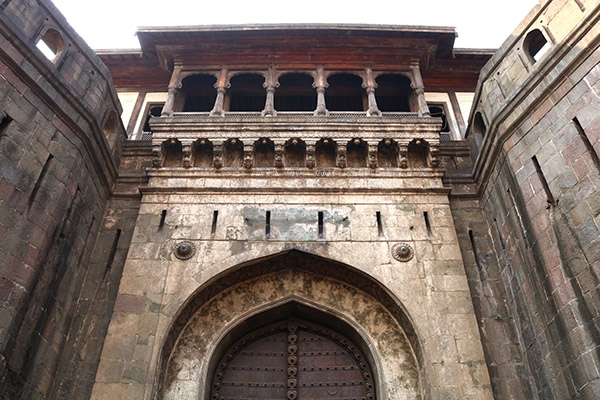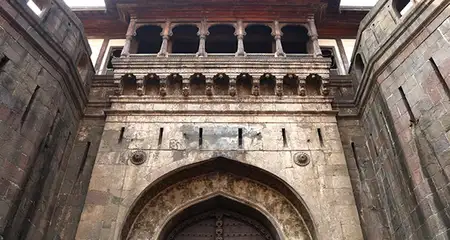Shaniwar Wada in Pune is a historical palace and fort that chronicles the glory and grandeur of the Maratha Empire. This old mansion boasts of a history of 287 years and was the seat of the Peshwas, who were the Prime Ministers to the Maratha rulers. It served as a melting pot of culture and politics until the Peshwas lost the Wada to the British in 1818.
Today, it stands as one of the finest architectural legacies and a prime tourist attraction in the city of Pune. If you are a history buff or enjoy art and architecture, this monument must be on your itinerary when you book your hotels in Pune.
Want to know more about this heritage monument riddled with tales of valor, grandeur, and treachery? Here is everything you should know about the Shaniwar Wada in Pune, including its history, timings, entry fee, architecture, and other interesting facts.
Shaniwar Wada Information:
| Location | Bajirao Road, Shaniwar Peth |
| Type | Fortification |
| Also Known as | Shanwarwada |
| Timings | 8:00 am to 6:30 pm; every day |
| Entry Fee | ₹5 for Indians; ₹125 for foreigners |
| Year of Construction | 1732 |
| Commissioned by | Peshwa Baji Rao I |
| Architectural Style | Maratha Imperial Architecture |
Shaniwar Wada: History
Shaniwar Wada was built by Peshwa Baji Rao I, a general under Chhatrapati Shahu Maharaj of the Maratha Empire. He laid the foundation of the site in 1730 and the construction was completed in 1732. Initially, it was intended to be a colossal seven-storied palace made of stones. However, after the construction of the base floor, the people of the national capital complained to the king that only he was authorized to build stone palaces. Consequently, the remaining floors were constructed using bricks. The full impact of this was felt when the British artillery attacked the palace 90 years after its construction. Except for the base floor which was constructed using stones, no other floor could stand the attack and all the top stories collapsed.
Over the years after its construction, the Peshwas made many additions to the mansion, such as fortification walls with gateways and bastions, reservoirs, court halls, fountains, and other structures. The palace was also a witness to several significant episodes in the history of the Peshwas. In 1773, the fifth Peshwa, Narayan Rao, was murdered inside this palace by his guards at the behest of Raghunath Rao, his uncle and Anandibai, his aunt. That’s not all! It was also the site where the romance between Peshwa Bajirao and Mastani Sahiba blossomed.
In 1818, the British East India Company gained control over the Wada following their win in the Third Anglo-Maratha War. On 27th February 1828, the palace was engulfed by a huge unexplained fire, causing extensive damage to the whole structure. After the fire doused, only the massive granite ramparts, deep foundations, and a few teak gateways and erections remained of the grand mansion. The structures that survived this massive fire outbreak are currently maintained as a tourist site.
Shaniwar Wada: Architecture
Shaniwar Wada features the Maratha Imperial architectural style. For the construction, teak was sourced from the Junnar jungles while lime was brought from the Jejuri lime belts and stones from the Chinchwad quarries.
The fortification wall of the palace had five entry points and nine bastion towers. The palace was designed with intricately carved teak doorways, exquisitely designed teak pillars, and marble floors. Scenes from the Ramayana and Mahabharata adorned its walls while glass chandeliers hung from the ceilings. Within the palace complex, the Ganpati Rang Mahal was erected as a separate place for observing religious functions. It had a massive statue of Lord Ganesha.
A majestic fountain shaped like a lotus, called Hazari Karanje or the Fountain of a Thousand Jets, adorned the palace complex. It is believed to have been the most exquisite fountain of that era whose jets formed 80 feet-high arches. The Thorlya Rayancha Diwankhana or the court reception hall of Baji Rao I, the Juna Arsa Mahal or the Mirror Hall, and the Naachacha Diwankhana or the Dance Hall were some of the other splendid structures that existed within the palace.
Shaniwar Wada: Today
Though Shaniwar Wada is a ruined structure now, it is still one of the best places to visit in Pune. Although the mansion covered nearly the whole city in its heyday, it currently spreads across 625 acres.
Interestingly, Shaniwar Wada is considered to be among the top haunted places in Pune. It is believed that the spirit of the murdered Peshwa, Narayan Rao, still roams the palace at night. The light and sound show held here in the evening is also a major attraction for visitors.
It is interesting to note that the old part of Pune is laid out around Shaniwar Wada in a chaotic yet orderly manner. You can also find some of the oldest markets in Pune, such as Tulshibaug, Laxmi Road, and Ravivar Peth, around this grand edifice.
Things to See in the Shaniwar Wada Complex
The ruined complex of Shaniwar Wada has many attractions to keep visitors enthralled, including the following:
- Dilli Darwaza or Dilli Gate, the main gate of the fortified palace
- Mastani Darwaja aka Mastani Gate or Aliibahadur Darwaja, the gateway used by Mastani, the second wife of Baji Rao I, when traveling out of the palace complex
- Khidki Darwaja or Window Gate, named after the armored window contained there
- Ganesh Darwaja or Ganesh Gate, near which existed the Ganesh Rang Mahal
- Jambhul Darwaja or Narayan Darwaja aka Narayan’s Gate, used by concubines to access and leave the fortified premises
- Nine bastion towers
- Garden complex
- Hazari Karanje, the sixteen-petal lotus-shaped fountain
- A few surviving cannons
- The majestic statue of Baji Rao I that stands at the entrance of the palace
Shaniwar Wada: Light and Sound Show
Among the key attractions at the palace is the light and sound show held here in the evenings. The show brings alive the bygone era in a visually appealing manner and provides information about the palace and the rule of the Peshwas. The shows are held in both Marathi and English.
- Duration: 55 minutes
- Ticket Booking Timings: 6:30 pm to 8:30 pm
- Show Timings: Marathi – 7:15 pm to 8.10 pm; English – 8:15 pm to 9.10 pm
- Ticket Prices: ₹25 per head
Lesser Known Facts about Shaniwar Wada
- The name Shaniwar Wada is derived from two Marathi words – Shaniwar meaning Saturday and Wada meaning a residential complex.
- The palace was constructed at a cost of 16,110 rupees, which was a princely sum in those days.
- If locals are to be believed, Peshwa Narayan Rao’s wails saying ‘kaka mala wachawa (uncle save me)’ can be heard even today on full moon nights.
- The palace was featured in one of the episodes of The Amazing Race Asia 3, a television reality show.
- It was also featured in the 2015 Bollywood blockbuster Bajirao Mastani.
- The main gate of the palace is so big that elephants can easily pass through it. However, to prevent the enemies from using elephants to charge the gate, sharp steel spikes were attached to each pane of the gate at an approximate height of an adult elephant’s forehead.
Attractions near Shaniwar Wada
- Nana Wada (240 m)
- Lal Mahal (250 m)
- Dagdusheth Halwai Ganpati Temple (450 m)
- Pataleshwar Temple (1 km)
- Vishrambaug Wada (1.1 km)
- Shree Omkareshwar Temple (1.1 km)
- Mahatma Phule Museum (1.8 km)
- Raja Dinkar Kelkar Museum (2.1 km)
- Kamala Nehru Park (3.5 km)
- Chattushringi Temple (4.6 km)
Seeped in history and heritage, Shaniwar Wada definitely makes for a fascinating tourist spot. While you are in the city, make sure to explore other historical places in Pune including Sinhagad Fort, Agha Khan Palace, and Lohagad Fort, among others. And after a hectic day of sightseeing, you can always head out to the dance pubs in Pune to unwind and end your day on a high note!





























बिल्कुल सही